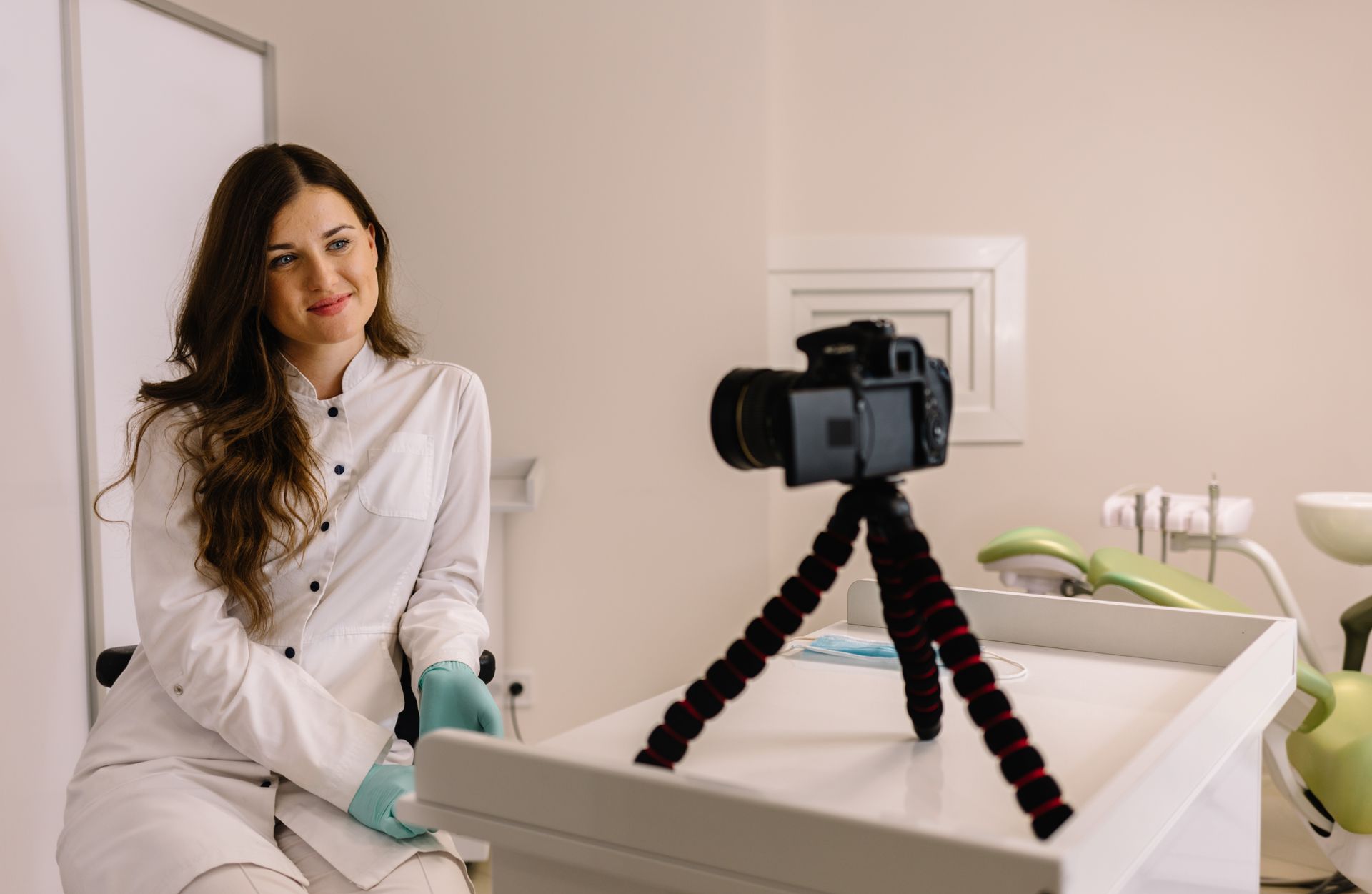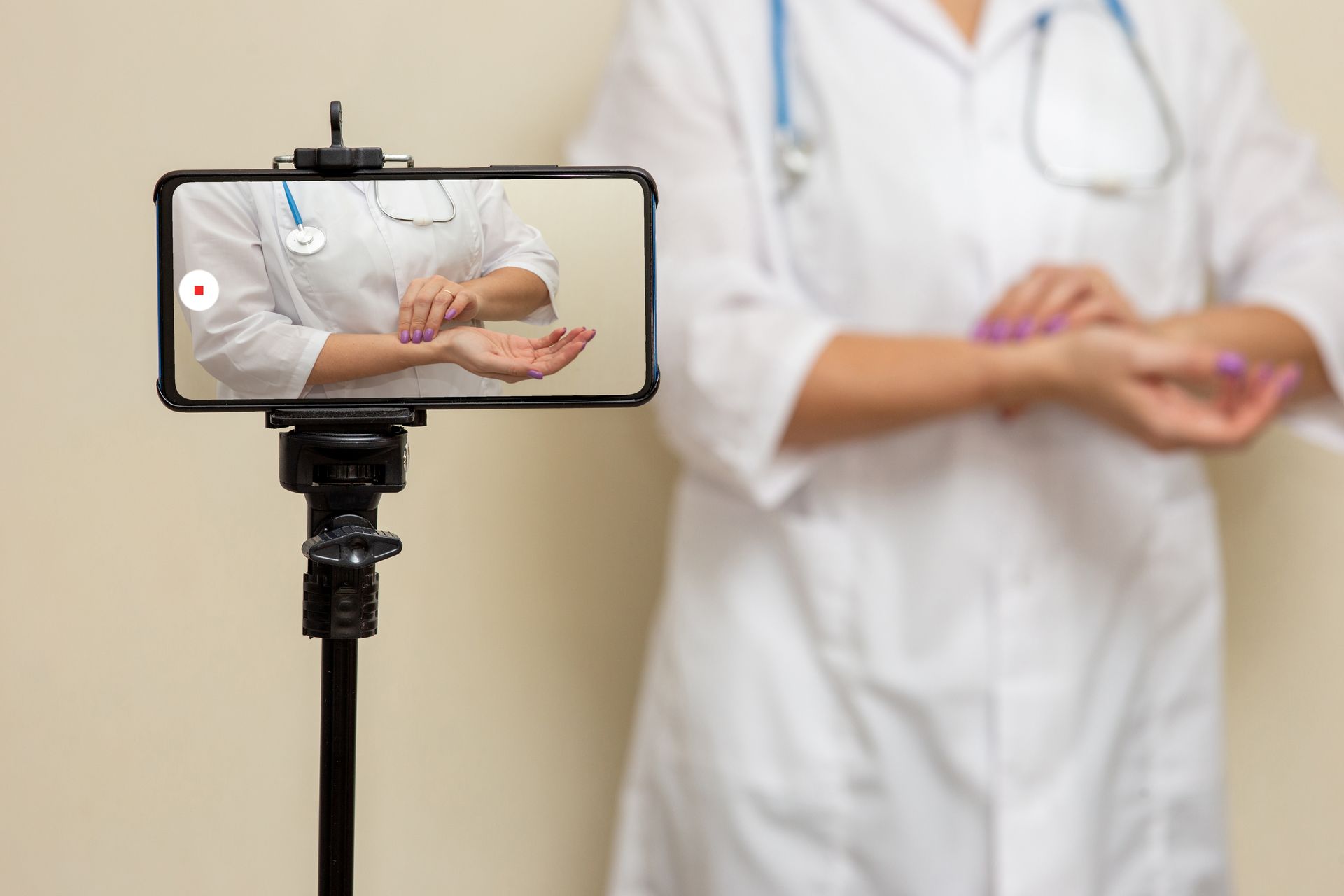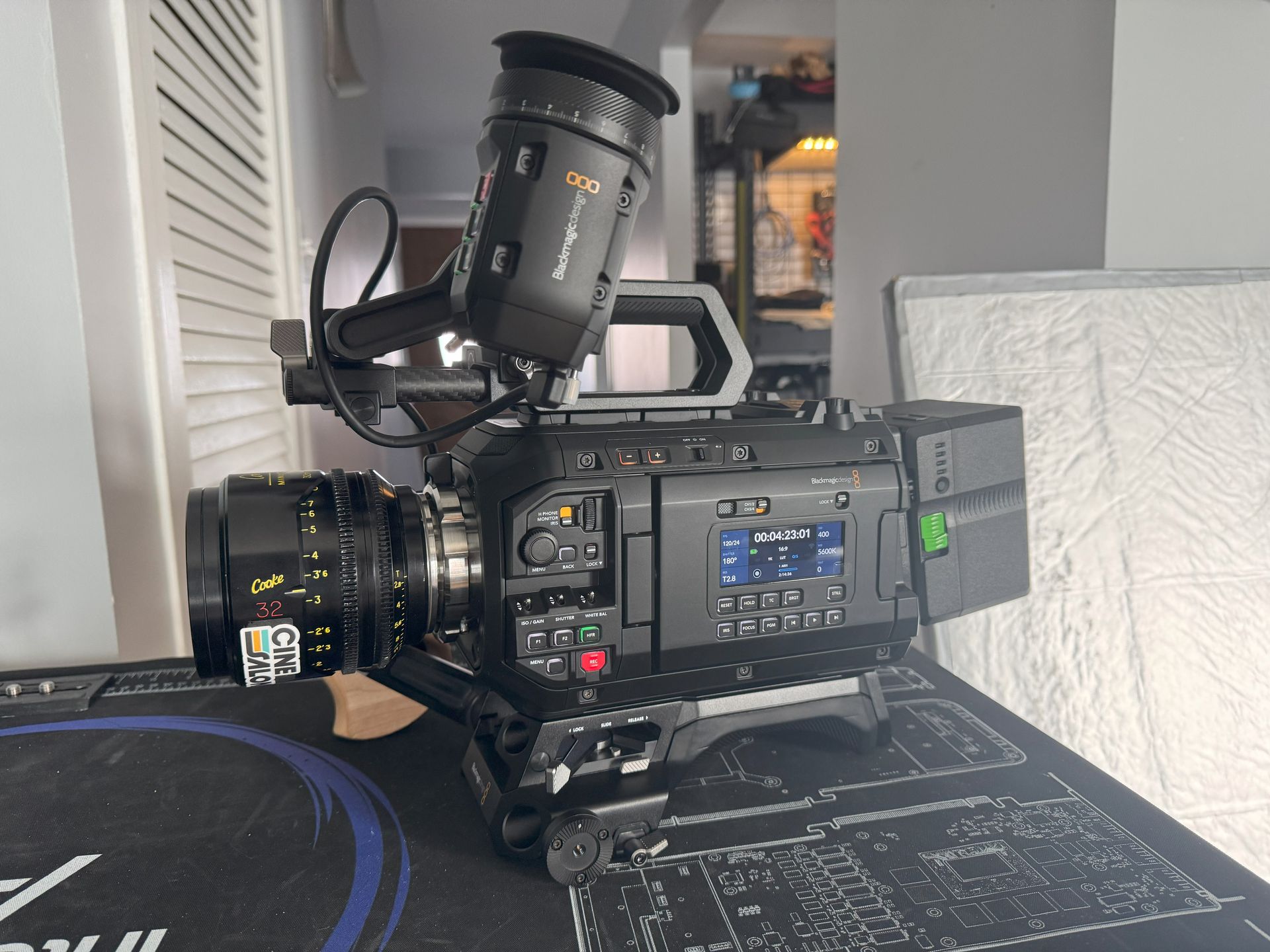Video marketing involves using videos to promote and market your products or services, increase engagement on your digital and social channels, educate your consumers and customers, and reach your audience with a new medium. In a healthcare setting, video marketing can be a powerful tool for patient education and outreach.
Importance of Video Marketing in Healthcare Industries
The healthcare industry is evolving rapidly, and so is how providers reach and engage with their patients. Video marketing in the healthcare industry can provide numerous benefits. It can boost patient engagement, increase understanding of medical procedures, enhance patient comfort and trust, and improve patient satisfaction. It is a unique tool that can bring a personal touch to healthcare.
Video Marketing in Dental and Medical Offices
For dental and medical offices, video marketing can be a game-changer. Videos can break down complex procedures, making them more understandable to patients. They can provide virtual office tours, introducing patients to the environment and staff before entering the door. They can also showcase patient testimonials, providing real-life examples of positive experiences at the practice.
In these ways, video marketing not only promotes the dental or medical office, but it also provides valuable information and builds relationships with patients. It can help to alleviate fears, address common questions, and establish a sense of familiarity and trust.
Overview of the Content
This guide will take you through the key elements of video marketing to promote your healthcare business, focusing on dental and medical offices. We will cover:
1. Understanding your audience and how to engage them effectively.
2. The different types of video content that can be used.
3. Best practices for creating compelling videos.
4. How to use video marketing to improve SEO.
5. Ways to promote your videos on various platforms.
6. How to measure the success of your video marketing campaigns.
7. Successful case studies for inspiration and learning.
By understanding and implementing video marketing, healthcare businesses can better connect with patients, provide valuable information, and promote their services effectively.
Importance of Video Marketing in Healthcare Businesses
Today, digital marketing is crucial for any business. For healthcare providers, it's a way to engage patients, educate them about their health, and explain the services they provide. And among various digital marketing techniques, video marketing has emerged as a potent tool.
Videos can be easily consumed and understood. They offer a visual and auditory experience, making complex topics simpler to understand. Moreover, videos can reach a large audience, thanks to social media platforms and improved internet connectivity.
Impact of Video Marketing on Healthcare Businesses
Video marketing impacts healthcare businesses in multiple ways. For one, it boosts visibility. Videos tend to stand out on social media feeds, allowing providers to reach more potential patients.
Second, videos improve comprehension. Health topics can be complex, but a well-crafted video can break down these topics into digestible information. This helps patients make informed decisions about their health and healthcare providers.
Third, videos build trust. Seeing and hearing a healthcare professional explain a procedure or provide health tips can foster a sense of trust and comfort. This trust can be the deciding factor for a patient choosing a provider.
Relevance to Dental and Medical Offices
For dental and medical offices, video marketing can be transformative. For example, a dental practice might create a video demonstrating proper brushing and flossing techniques. This educates patients and promotes the practice’s commitment to oral hygiene.
Similarly, a medical office could produce videos explaining various procedures or giving office tours. These videos can alleviate patients' anxieties and make them more comfortable visiting the doctor. By illustrating the processes and facilities, videos can help potential patients overcome the fear of the unknown.
In summary, video marketing is a powerful tool in the healthcare industry, particularly for dental and medical offices. It increases visibility, aids comprehension, builds trust, and can ultimately lead to more patient bookings.
Understanding the Audience
Defining Your Target Market
The first step in any marketing effort is defining your target market. In healthcare, your target market is often the patients you aim to serve. Consider their age, location, health needs, and lifestyle. For a pediatric dental office, your target market might be local families. For a medical specialist, it could be adults with a specific health condition.
Understanding Patient Needs and Concerns
Once you know your target market, delve deeper into their needs and concerns. For example, new parents might be worried about their child's first dental visit. A video addressing this concern can be an effective tool. Patients with a specific medical condition might have questions about treatment options. An informative video can provide the needed clarity.
Understanding these concerns will guide you in creating video content that resonates with your audience. Keep in mind that addressing patient anxieties and providing clear, accessible information can build trust and foster patient loyalty.
How Video Content Can Address These Needs
Video content offers a unique opportunity to address patient needs and concerns directly. It allows healthcare providers to demonstrate empathy, share knowledge, and humanize their practice. Here's how:
- Empathy: Videos showing healthcare professionals talking about patient concerns can create a sense of understanding and empathy. This emotional connection can make patients more likely to choose your practice.
- Education: Informative videos can help patients understand their health better. Explainer videos about medical conditions, treatment procedures, or preventive care can be valuable resources for patients.
- Humanization: Videos can also give your practice a human face. Videos featuring staff members, patient experiences, or office tours can make your practice more relatable and welcoming.
Remember, your video content should aim to provide value to your patients. Whether through education, reassurance, or simply getting to know your team, your videos should speak directly to your audience's needs and concerns.
By understanding your audience, you can create more effective video marketing campaigns. You'll be able to address your patient's needs, provide valuable information, and build a stronger connection with them through your videos. This connection is key to fostering trust and loyalty, and, ultimately, to the success of your healthcare business.
By understanding your audience, you can create more effective video marketing campaigns. You'll be able to address your patient's needs, provide valuable information, and build a stronger connection with them through your videos. This connection is key to fostering trust and loyalty, and, ultimately, to the success of your healthcare business.

Types of Video Marketing for Healthcare Businesses
In healthcare, numerous types of video content can be used to promote your services, educate your patients, and build your brand. Here's a closer look at several video types:
Patient Testimonials
There's nothing quite as impactful as hearing about a positive experience directly from a patient. Testimonials provide social proof, and can significantly influence a prospective patient's decision to choose your practice.
These videos could feature patients discussing their experiences with your practice, the improvement in their health, or their satisfaction with your services. It's a way to humanize your practice and build trust with potential patients.
Procedure Demonstrations
Many patients are apprehensive about medical procedures due to a lack of understanding. Procedure demonstration videos help demystify the process, alleviate anxieties, and educate patients about what to expect.
For instance, a dental office could create a video showing the process of a routine cleaning or a filling. A medical office could demonstrate how a common diagnostic procedure is performed.
Office Tours and Staff Introductions
One barrier preventing people from seeking medical help is the fear of the unknown. Offering a virtual tour of your office can create a sense of familiarity, making potential patients more comfortable.
Similarly, videos introducing your staff members can help patients feel more at ease. They get to see the faces behind the healthcare services and feel like they're a part of your healthcare community even before their first visit.
Educational and Informative Content
Educational videos can provide valuable health information to your audience. This content can range from explaining a specific condition, offering preventive care tips, and discussing treatment options.
Such videos position you as a trusted expert in your field. They can be a resource for those searching for health information online, driving more traffic to your website or social media pages.
Q&A Sessions and Live Streams
Live video sessions allow for real-time interaction with your audience. You can host a Q&A session where you answer common patient questions, discuss recent health topics, or even demonstrate proper health practices.
This direct engagement can help build a strong relationship with your audience. It also allows immediate feedback and queries, making your content more interactive and engaging.
Video marketing for healthcare businesses can take many forms. Whether testimonials, procedure demos, office tours, educational content, or live sessions, the key is creating videos that resonate with your audience and provide value. A well-planned video marketing strategy can help you connect with your patients more deeply and promote your healthcare services effectively.
How to Create Effective Video Content
Creating effective video content for healthcare businesses involves careful planning, a focus on quality, and compliance with regulations. Here are some key steps:
Best Practices for Video Production
Creating videos doesn't necessarily require expensive equipment. Nowadays, smartphones can capture high-quality video. The focus should be on good lighting, clear audio, and steady filming.
Consider working with a script. This ensures you cover all key points and maintains the video’s focus. Also, remember to keep your videos short and engaging. Most viewers prefer videos that are under two minutes.
Storytelling in Healthcare
Storytelling is a powerful tool in healthcare marketing. It helps humanize your brand and makes your content more engaging. In your videos, share patient success stories, discuss case studies, or even tell the story of your practice and its mission.
Remember, a good story often has a beginning, middle, and end. For instance, a patient's journey could start with their initial health issues, followed by the treatment process, and conclude with their recovery.
Maintaining Compliance with Patient Privacy Laws (HIPAA)
Ensuring your video content adheres to patient privacy laws like the Health Insurance Portability and Accountability Act (HIPAA) in the United States is critical. Always obtain written consent from patients before featuring them in your videos. Avoid sharing information that could identify a patient unless they have explicitly given permission.
Incorporating Office Branding in Videos
Your videos should be a reflection of your brand. This includes your practice's logo, color scheme, and overall tone of communication. Consistent branding helps build recognition and reinforces trust with your audience.
Remember to end your videos with a call to action. This could be a prompt to schedule an appointment, visit your website, or follow your social media profiles. This makes your videos not just engaging, but also action-oriented.
Creating effective video content involves a balance of quality production, engaging storytelling, legal compliance, and consistent branding. With careful planning and a patient-centric approach, you can use video marketing to significantly enhance your healthcare business's outreach and impact.

Using Video Marketing to Improve SEO
Search Engine Optimization (SEO) is crucial for digital visibility. Video content can significantly boost your SEO efforts. Here's how:
How Video Content Affects SEO
Google's algorithm favors content that engages viewers. Videos, being highly engaging, can help improve your website's search engine ranking.
Additionally, hosting video content on platforms like YouTube (owned by Google) can increase your visibility. Embedding these videos on your website directly links your site and Google's services, potentially boosting your SEO.
Importance of Keywords and Descriptions
For your video content to help with SEO, it must be discoverable. This is where keywords and descriptions come into play.
Use relevant keywords in the title, tags, and description when video uploading. This helps search engines understand the video's content and makes it more likely to appear in search results.
For example, a dental practice might use keywords like "root canal procedure," "dentist in [city name]," or "oral health tips."
Utilizing Transcripts for Improved SEO
Transcripts are a written version of the spoken content in your videos. They offer two main benefits for SEO:
- Accessibility: Transcripts make your video content accessible to people with hearing impairments, increasing your potential audience.
- Keyword Optimization: Transcripts provide more text for search engines to crawl, increasing opportunities for keyword optimization.
Adding transcripts is like creating a blog post for each video, allowing you to capitalize on the SEO value of the content.
In summary, video marketing can significantly enhance your SEO efforts. By focusing on engaging content, keyword optimization, and accessibility, you can drive more organic traffic to your website, further promoting your healthcare services.
Promoting Video Content
Social Media Platforms
Once you've created your video content, the next step is to promote it effectively. Here's how to get your videos in front of your target audience:
Share your videos on various social media platforms like Facebook, Twitter, LinkedIn, and Instagram. Each platform has a different audience, so tailor your content accordingly. Short, engaging clips work well on Instagram, while Facebook is great for longer, more detailed videos. LinkedIn is ideal for educational and professional content.
YouTube Channel
Creating a YouTube channel for your healthcare practice can be highly beneficial. It allows you to organize your videos in one place, making it easier for patients to find and watch your content. Be sure to optimize each video's title, description, and tags for SEO.
Email Marketing
Include videos in your email newsletters. This can increase engagement rates and drive more website or YouTube channel traffic. For example, you could share a video about a new medical procedure, a patient testimonial, or a behind-the-scenes office tour.
Website Integration
Embed videos on your website, such as on the homepage, service pages, or blog posts. This can increase the time visitors spend on your site, improving your SEO and making it more likely for patients to explore your services.
Paid Advertising
Consider using paid advertising to boost the visibility of your videos. This could be through social media, Google, or YouTube ads. This can be especially effective for reaching a targeted audience that matches your patient demographics.
Promoting your video content is crucial in maximizing its reach and effectiveness. By leveraging various channels, you can ensure your videos reach your intended audience, engage prospective patients, and ultimately, enhance your healthcare practice's visibility and reputation.

Evaluating Video Marketing Success
After you've planned, created, and promoted your video content, it's time to assess its success. This helps you understand what's working, what's not, and how to improve future video marketing efforts.
Key Performance Indicators (KPIs)
Identify KPIs to measure the success of your video content. Here are a few to consider:
1. View Count: The total number of views gives you an idea of the reach of your video.
2. Watch Time: This indicates how long viewers stayed engaged with your video. High watch times usually signal high-quality, engaging content.
3. Likes, Shares, and Comments: These actions show your viewers' engagement. They also increase the visibility of your videos.
4. Click-through Rate (CTR): If your video includes a call to action, the CTR will tell you how many viewers followed through. 5. Conversion Rate: This shows how many viewers completed a desired action, such as booking an appointment, after watching your video.
Using Analytics Tools
Platforms like YouTube, Facebook, and Google offer analytics tools that help you track these KPIs. You can see detailed stats like the demographic breakdown of your audience, peak viewing times, and how viewers found your video.
Conducting Patient Surveys
Patient feedback can also provide valuable insights. Conduct surveys to find out how your patients feel about your video content. Did they find the videos helpful? What topics would they like to see in the future? Use this feedback to improve your future video content.
In summary, evaluating the success of your video marketing efforts is essential. It allows you to make data-driven decisions and continuously refine your video marketing strategy. Focusing on key metrics and feedback ensures your video content effectively supports your healthcare business's goals.
Case Studies in Video Marketing for Healthcare
Case studies can provide valuable insights into how video marketing strategies are implemented in real-world settings. Here are two examples:
Case Study 1: A Pediatric Dentistry's Successful Patient Testimonial Videos
A pediatric dentistry, located in a bustling city, faced intense competition. They decided to launch a video marketing campaign focused on patient testimonials to stand out.
Approach
The dentistry asked their satisfied patients' parents to share their experiences on camera. They ensured each video was short, warm, and personal, capturing the child's improvement and the parent's relief. They also used professional lighting and clear audio to maintain high video quality.
Results
The testimonial videos became a hit, not just on their website, but also on social media platforms. The dental practice saw increased website traffic, higher engagement on social media, and a significant increase in new patient appointments. They were also appreciated for their focus on patient stories, strengthening the community's bond.
Case Study 2: A Medical Specialist's Use of Informative Video Content
A medical specialist, known for their expertise in a specific condition, wanted to reach more patients seeking information about their condition.
Approach
The specialist created a series of informative videos explaining different aspects of the condition's symptoms, diagnosis methods, and treatment options. They used clear, jargon-free language to make the content accessible to non-medical viewers.
Results
The videos were uploaded on the specialist's YouTube channel and embedded on the website. The informative content positioned the specialist as a trusted authority, resulting in increased website traffic and YouTube subscriptions. The video series also helped patients better understand their condition, leading to more informed discussions during appointments.
These case studies highlight the power of video marketing in healthcare. Healthcare providers can boost their digital visibility, educate patients, and build a trusted community by focusing on patient testimonials and informative content.
Final Thought on How to Use Video Marketing to Promote Healthcare Businesses
Video marketing has emerged as a powerful tool for healthcare businesses. It's a medium that can humanize your practice, educate patients, and significantly improve your digital visibility.
From creating engaging video content to effective promotion, video marketing involves strategic planning and execution. Focusing on patient testimonials, procedure demonstrations, informative content, and live sessions can help you resonate with your audience and provide value.
Remember, the ultimate goal is to build trust, improve patient communication, and promote your services. By adhering to patient privacy laws, incorporating strong branding, and evaluating the success of your videos, you can ensure your video marketing strategy aligns with your business goals.
As highlighted in our case studies, video marketing can yield remarkable results for healthcare businesses. The key lies in understanding your audience, crafting content that meets their needs, and evaluating your efforts for continuous improvement.
In an age where digital communication is becoming ever more crucial, video marketing provides a valuable opportunity for healthcare providers to connect with patients on a deeper level. Embrace the power of video, and you'll be well-equipped to promote your healthcare business in the dynamic digital landscape.

Get total clarity on your video marketing and paid media with our FREE comprehensive data audit.








